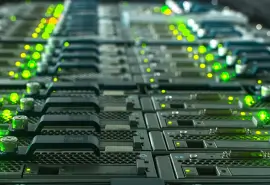Many data recovery companies out there explain how a physical recovery with certified engineers produces the best results as far as the number of files recovered from a damaged device. However, there may be consumers who question data recovery and how successful the entire process really is. This blog post will outline how data recovery companies measure success, how different failure scenarios affect the outcome of a recovery and provide an answer as to how successful data recovery truly is in the technology-driven world in which we live.
How Do Data Recovery Companies Measure Success?
Success for corporations in any industry can vary based on internal operations and the process for delivering a service or product. As far as a data recovery provider, they may measure their success rate based on the number of devices they recover data from each year, meaning even if they only retrieve a few files, they worked on and recovered data from a device, so it counts towards their total.
Other companies may define success based on the number of times they were able to make a complete recovery on a hard drive, solid-state drive, or flash media. Perhaps they retrieved files from a hard drive 75 times in a month, and each time they were able to recover information. They may base their success on the number of devices that were worked in a specific category.
Professional companies like Secure Data Recovery base success rates on the amount of data that is retrieved from a failed device. We have a 96% success rate, which means that out of all the recoveries we perform, we are able to recover 96% of the files on the device. It is in this instance that quantity is taken into consideration when determining how successful a recovery is.
How Do Failure Scenarios Affect Outcomes?
Some cases are going to be more difficult than others depending on how a device was damaged. This in turn also relates to the cost of data recovery. The more extensive the damage on the device, whether it be physical or logical, the more difficult the recovery and engineers will have to put in extra work.
Fire damage, for example, will char and melt some of the internal components of a mobile phone or a hard drive, meaning the engineers must replace those parts to get the device in working order enough to retrieve the files. In logical cases, if a RAID array has been reformatted or files have been deleted, it can be difficult to recover the data, especially if the user attempted to rebuild the array. This may have caused the data to be overwritten, making a complete recovery near impossible.
On the other hand, simpler cases like a clicking hard drive, or an older model phone that has just worn out are run-of-the-mill cases for an established data recovery company. It is these cases that yield the best results because engineers regularly see these situations in the lab. You need a team of engineers who can recover information from devices in all failure scenarios and will have the tools and technology to have a successful recovery no matter the circumstances.
Choosing a Successful Company in the Future
Though the world of technology is rapidly changing with new models of phones and laptop computers running on slimmer and more compact hard drives, data recovery remains a constant in the lives of consumers. A professional company, such as Secure Data Recovery, will have a dedicated R&D team to work on discovering new recovery methods and proprietary tools for existing and emerging media. This level of commitment ensures that success rates will only improve as the solutions become more bountiful.
Our team of engineers have decades of experience and there have been many cases we took on after other companies declared them to be unrecoverable. We define success not just by the number of files we can return to you, but by the level of customer service we provide. Secure Data Recovery holds itself to a higher standard and when you choose a recovery provider, you should do the same by examining how they measure success. Call us to start a case today at 1-800-388-1266.






